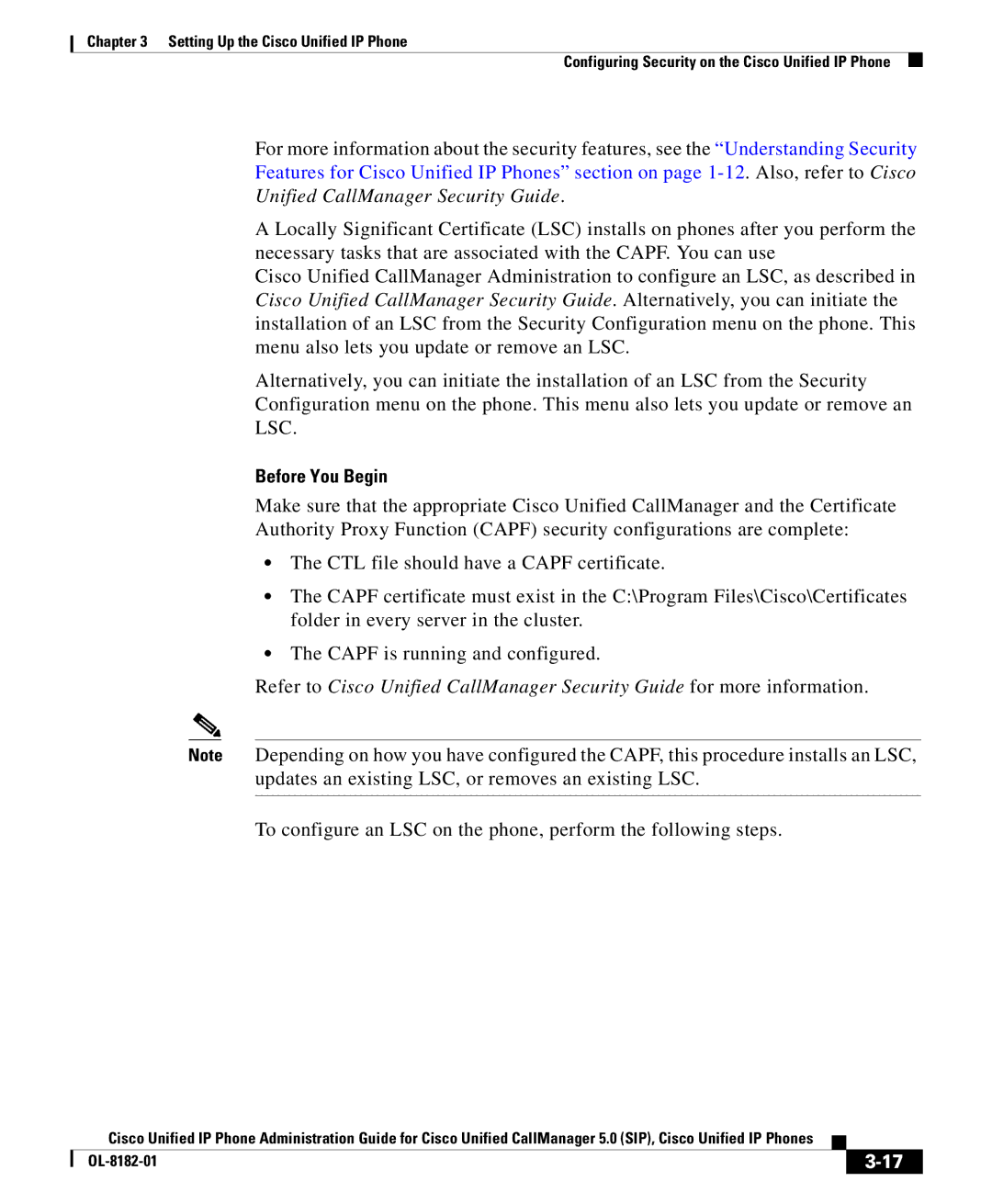
Chapter 3 Setting Up the Cisco Unified IP Phone
Configuring Security on the Cisco Unified IP Phone
For more information about the security features, see the “Understanding Security Features for Cisco Unified IP Phones” section on page
A Locally Significant Certificate (LSC) installs on phones after you perform the necessary tasks that are associated with the CAPF. You can use
Cisco Unified CallManager Administration to configure an LSC, as described in Cisco Unified CallManager Security Guide. Alternatively, you can initiate the installation of an LSC from the Security Configuration menu on the phone. This menu also lets you update or remove an LSC.
Alternatively, you can initiate the installation of an LSC from the Security Configuration menu on the phone. This menu also lets you update or remove an LSC.
Before You Begin
Make sure that the appropriate Cisco Unified CallManager and the Certificate Authority Proxy Function (CAPF) security configurations are complete:
•The CTL file should have a CAPF certificate.
•The CAPF certificate must exist in the C:\Program Files\Cisco\Certificates folder in every server in the cluster.
•The CAPF is running and configured.
Refer to Cisco Unified CallManager Security Guide for more information.
Note Depending on how you have configured the CAPF, this procedure installs an LSC, updates an existing LSC, or removes an existing LSC.
To configure an LSC on the phone, perform the following steps.
Cisco Unified IP Phone Administration Guide for Cisco Unified CallManager 5.0 (SIP), Cisco Unified IP Phones
| ||
|
